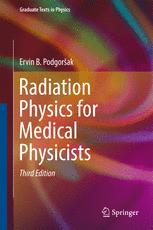

Most ebook files are in PDF format, so you can easily read them using various software such as Foxit Reader or directly on the Google Chrome browser.
Some ebook files are released by publishers in other formats such as .awz, .mobi, .epub, .fb2, etc. You may need to install specific software to read these formats on mobile/PC, such as Calibre.
Please read the tutorial at this link: https://ebookbell.com/faq
We offer FREE conversion to the popular formats you request; however, this may take some time. Therefore, right after payment, please email us, and we will try to provide the service as quickly as possible.
For some exceptional file formats or broken links (if any), please refrain from opening any disputes. Instead, email us first, and we will try to assist within a maximum of 6 hours.
EbookBell Team

4.7
46 reviewsThis textbook summarizes the basic knowledge of atomic, nuclear, and radiation physics that professionals working in medical physics and biomedical engineering need for efficient and safe use of ionizing radiation in medicine. Concentrating on the underlying principles of radiation physics, the textbook covers the prerequisite knowledge for medical physics courses on the graduate and post-graduate levels in radiotherapy physics, radiation dosimetry, imaging physics, and health physics, thus providing the link between elementary undergraduate physics and the intricacies of four medical physics specialties: diagnostic radiology physics, nuclear medicine physics, radiation oncology physics, and health physics. To recognize the importance of radiation dosimetry to medical physics three new chapters have been added to the 14 chapters of the previous edition. Chapter 15 provides a general introduction to radiation dosimetry. Chapter 16 deals with absolute radiation dosimetry systems that establish absorbed dose or some other dose related quantity directly from the signal measured by the dosimeter. Three absolute dosimetry techniques are known and described in detail: (i) calorimetric; (ii) chemical (Fricke), and (iii) ionometric. Chapter 17 deals with relative radiation dosimetry systems that rely on a previous dosimeter calibration in a known radiation field. Many relative radiation dosimetry systems have been developed to date and four most important categories used routinely in medicine and radiation protection are described in this chapter: (i) Ionometric dosimetry; (ii) Luminescence dosimetry; (iii) Semiconductor dosimetry; and (iv) Film dosimetry.
The book is intended as a textbook for a radiation physics course in academic medical physics graduate programs as well as a reference book for candidates preparing for certification examinations in medical physics sub-specialties. It may also be of interest to many professionals, not only physicists, who in their daily occupations deal with various aspects of medical physics or radiation physics and have a need or desire to improve their understanding of radiation physics.